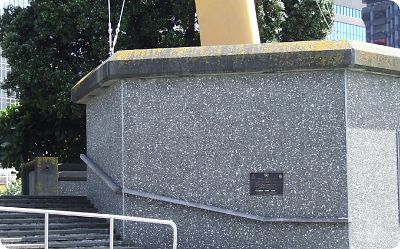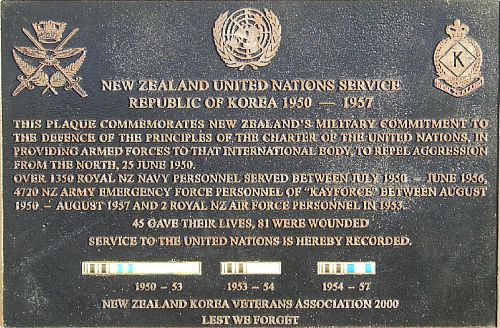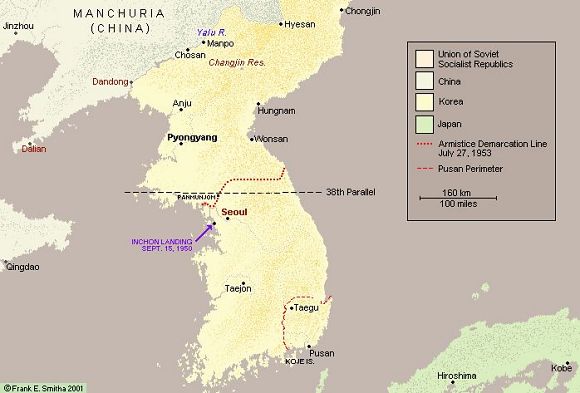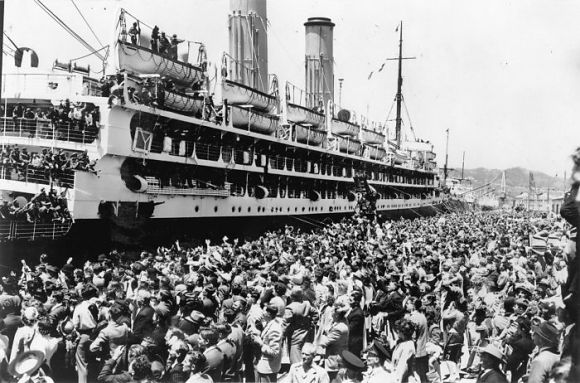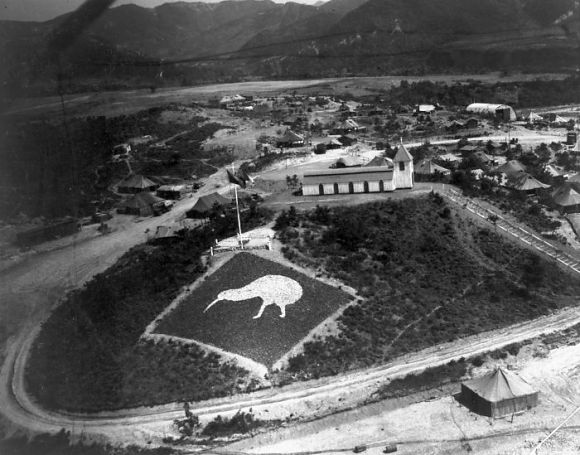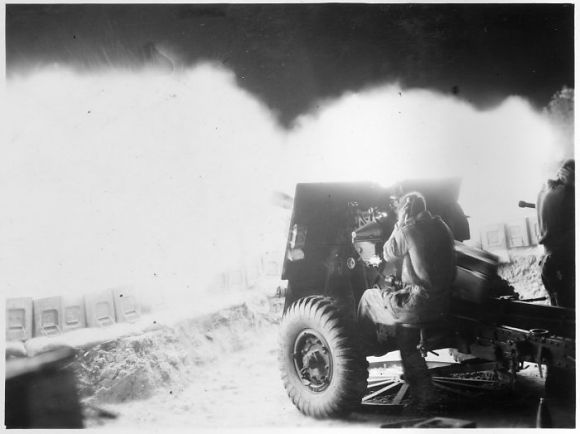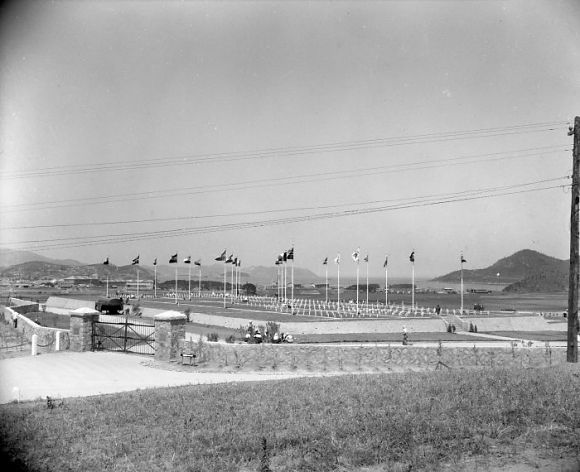Zeitblick
- Series A HillAc Production |
|
City,
My City - Series Two Part 6 "Service
to the United Nations is Hereby Recorded"
Sunday, September 9th, 1945 saw the conclusion of the Second World War, the most far-reaching and destructive conflict the world had ever known. The lessons of war were cruel for both victors and vanquished alike and something from which the whole world would surely learn a valuable future lesson. It was to be a scant five years, however, before we again heard the rumble of distant guns and were to bid farewell to New Zealand servicemen to do battle in some foreign land. The Korean War became known as the "Forgotten War", sandwiched as it was between World War Two and the Vietnam War and historically overshadowed by both. Measured in losses of Allied servicemen, however, the war in Korea accounted for more than twice as many fatalities as did the Vietnam War. During World War Two the Korean Peninsula, as a Japanese colony, was occupied by the armed forces of Imperial Japan and near the end of the war, the United States military, still heavily committed in other theatres of the war, was struggling to drive the Japanese out. President Truman turned to the Soviet Union for help who succeeded in driving the Japanese from Korean soil. As the country had been jointly liberated by the United States and the Soviet Union it was tactfully decided that until self-government could be established by the newly formed United Nations. Korea should be jointly administered as Communist North Korea and Democratic South Korea. The dividing line was to be 38 degrees north latitude or the "38th Parallel" as it became known. From the start this partition led to irreconcilable ideological differences and the resulting war was to become the first skirmish in a protracted period in world history known as the "Cold War".
Both Koreas laid claim to the whole peninsula but North Korea with its "North Korean Peoples Army" (NKPA), established with the military assistance of the Soviet Union, was by far the strongest aggressor. Korean troops had fought with Chairman Mao in China and Manchuria and were to form the core of the NKPA. In the early hours of June 25th 1950, North Korean troops crossed the 38th Parallel in a full-scale invasion, repelling all resistance and spearheading an attack that took the ill-equipped and inexperienced South Koreans by surprise. The South Korean defenders, aided by the few American troops remaining in the country, suffered defeat after defeat and were steadily driven south down the length of the peninsula until they occupied no more than a toehold around the port city of Pusan. Here the floodtide of NKPA troops was halted and with supplies and reinforcements flowing into the country, the southern defenders were able to establish and hold a region outlined by the "Pusan Perimeter" with a front line no more than 160 kilometers in length. Now the NKPA, buoyed by their successes, had advanced too far and in doing so had stretched their supply lines recklessly thin, impacting greatly on their ability to continue an effective fight.
Breaking out from the "Pusan Perimeter" became critical to achieving any success in the war and to help accomplish this the Americans mounted a daring attack on the harbour at Inchon, not far from the 38th Parallel. The over-extended NKPA were unable to defend the harbour adequately and Inchon was captured, forcing the NKPA to fight a battle on two fronts. A breakout from Pusan was thus effected and within a matter of weeks, the Allied forces were able to push the NKPA back across the 38th Parallel and north to within a few miles of the Yalu River, the border with mainland China. The Chinese, fearing an invasion, joined with their Communist neighbours and struck back at South Korea. Now, like their NKPA foes, the advancing Allied army were to stretch their supply lines too thin and, in their turn, were to be driven back. A request went out from the United Nations for support to relieve the stand-off in Korea and sixteen member nations responded to the call to send troops, arms and supplies while five others volunteered to send medical units. The response from New Zealand was immediate and two frigates - "HMNZS Pukaki" & "HMNZS Tutira" - were sent to the area while the call went out from Wellington for volunteers to form a 1000 man ground force. The answer for this call was overwhelming with five times the required volunteers stepping forward within the first five days. New Zealand showed then as it does now that it was prepared to stand alongside the United Nations and do its best for world peace.
Suitable men were selected, training was immediately organised and by the end of 1950 a first-class artillery regiment, the 16th Field Artillery, and a motor transport company to keep it supplied, 10 Company RNZASC, were ready to sail north to the conflict in Korea. On December 10th 1950 the 1056-man force embarked from Aotea Wharf, Wellington, on board the SS Ormonde, while their guns and other heavy equipment had already been shipped to Korea aboard the freighter Ganges in late November. On arriving in Pusan 20 days later on New Year's Eve they joined their parent unit the 27th British Commonwealth Infantry Brigade spending the first week calibrating the guns and preparing for action. From Pusan, and in convoy with the 27th and other units, the 16th Field travelled north to Naegon-ni, near present-day Seoul in support of the 27th and where they were to fire their first shots in anger on January 29th 1951. In February the 16th Field, as part of "Operation Killer", designed to trap the enemy in a pincer movement, crossed the Han River, south west of Seoul. While the operation failed in its key objective it did succeed in compelling the Chinese and North Koreans troops to withdraw further north. Continuing north to Yongdogwon-ni the 27th Brigade rested for ten days while the 16th Field continued on north to Hongchong where it served in support of the 1st US Cavalry Division and a week later the 1st US Marine Division.
April 23rd 1951 was to find the 16th Field in the thick of the fighting and they were about to face their toughest test yet, the major allied action at Kap'yong in the centre of the Korean peninsula east of Seoul and just below the 38th Parallel. North of Kap'young the Chinese 118th Division had attacked in strength, seeking to achieve a major breakthrough along the valley of the Kap'yong River, a major approach route to the heart of South Korea. After moving north with the 27th, which remained in reserve behind the lines, the 16th Field continued up into the front line in support of an embattled South Korean Division. At about this time the Chinese launched a stinging counter-attack and succeeded in splintering the South Korean Division and instigating a rout which opened a ten-mile gap in the Allied front line. Chinese troops poured through the breach and, although the Allied soldiers continued to fight boldly they were forced to withdraw along the Kap'yong Valley.The 16th Regiment kept up their barrage while the Allied infantry descended from the surrounding hills and as each company of infantry reached the valley floor one troop of the 16th was withdrawn from action. Nor did the equipment of the 16th leave entirely empty as it rolled to safety down the valley. Dozens of retreating allied infantry climbed on board each gun tractor, trailer and gun, clinging on anywhere they could for the hair raising ride to safety.
Following the withdrawal from Kap'yong Valley, the 16th Regiment took up new positions further south which they occupied for all of two hours before they were ordered to re-locate in the early hours of April 24th - back to Kap'yong. There had been reports of a further Chinese advance and it was now the Australian infantry who were bearing the brunt of the Chinese onslaught. The Kiwi gunners began firing without let-up in support of their Trans-Tasman cousins and were fortunate to have, at that time, seven American gun batteries under their command. The Australian infantry held their position and ultimately repelled the Chinese attack and once again New Zealand and Australian servicemen stood proudly together resisting the enemy and showing the world the mettle of the ANZAC's (Australian & New Zealand Army Corps). The date of this battle, April 25th, was the anniversary of the greatest celebration of nationhood observed by both New Zealand and Australia - ANZAC Day, the First World War action at Gallipoli. The New Zealand and Australian contribution to the battle at Kap'yong was described as "...some of the bloodiest and fiercest fighting ever to take place in ANZAC history." For this action and for their "...exceptionally meritorious service and heroism..." New Zealand's K Force was awarded the Republic of Korea Presidential Unit Citation by Syngman Rhee, the first President of South Korea. During the following months the 16th saw further action in support of a number of Allied infantry units and the New Zealand gunners gained a reputation for rapid and accurate fire. In fact an American unit was convinced that the Kiwi gunners used an automatic breech-feeding mechanism and during one 24 hour period in November 1951 the 16th fired its record number of rounds for one day: 10,387.
Within two months of the engagement at Kap'yong, the Korean War stagnated, degenerating into a heated standoff and characterised by trench warfare and repeated clashes between enemy patrols. With both sides almost at a standstill, what little movement there was continued to occur in and around the 38th Parallel and the conflict entered a stage called the "Static War" which continued until the signing of a cease-fire agreement, coming into effect at 5:30am on July 27th 1953. After 30 months of almost continuous fighting the guns of the 16th Field Regiment fell silent and their total of 800,000 rounds fired was to be the highest for any field regiment in Korea. But the war had not ended, as others do, with a winner and a loser, it was a truce which had ended the carnage and an uneasy truce at that. Now two huge armies faced off across a narrow, 4000 yard-wide Demilitarised Zone (DMZ), each ready to resume hostilities the moment the other side so much as flinched or showed any sign of aggression. One might even suggest that the war continues to this day; a war of words, a war of politics and a war of ideologies, a war in all respects but without any overt expression of hostility. The Kiwi soldiers withdrew from the area marked out for the DMZ and by September 13th 1953 had taken up new positions south of the ceasefire line. Here they remained on duty until October 7th 1954 when the New Zealand 16th Field Artillery Regiment officially became non-operational. At the formal farewell of the Regiment from Korea, Divisional Artillery Commander Brigadier Rowlandson said of the troops: "You are going away, certainly well-liked - and well- respected." New Zealand maintained a military presence in Korea until August 1957, leaving behind 45 of its number buried in the United Nations Cemetery at Pusan. This country's belief in and support of the principles and objectives of the United Nations continues to this day with New Zealand servicemen helping to support peacekeeping endeavours in many parts of the world.
© Peter Wells, Wellington, New Zealand |
